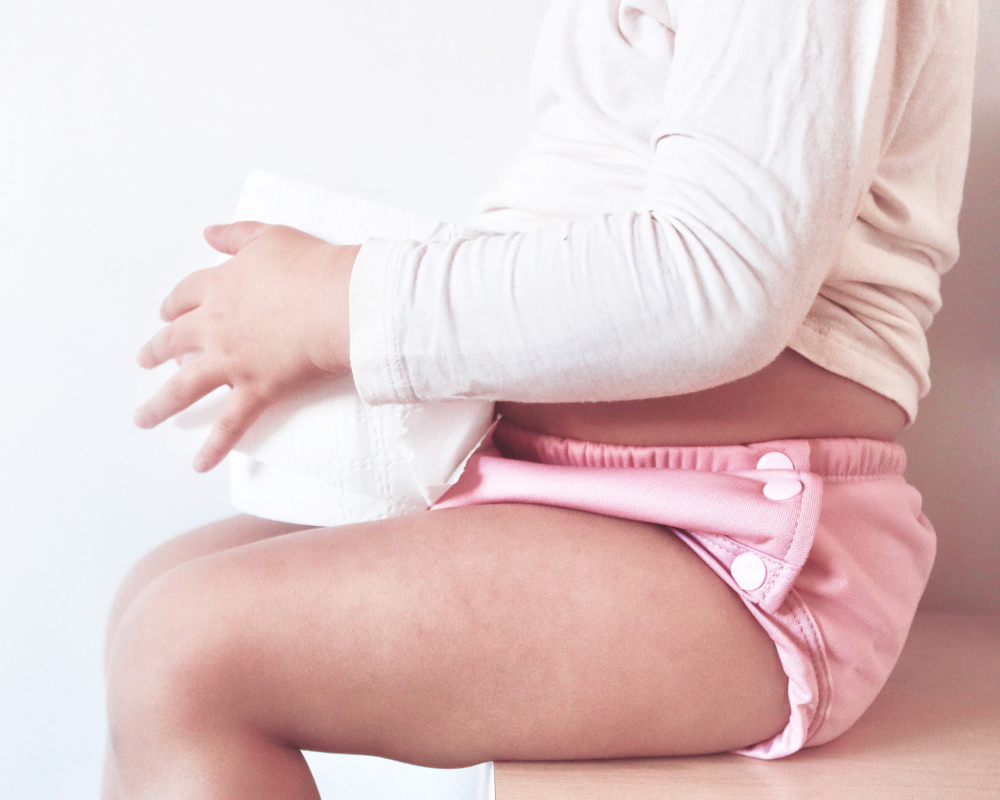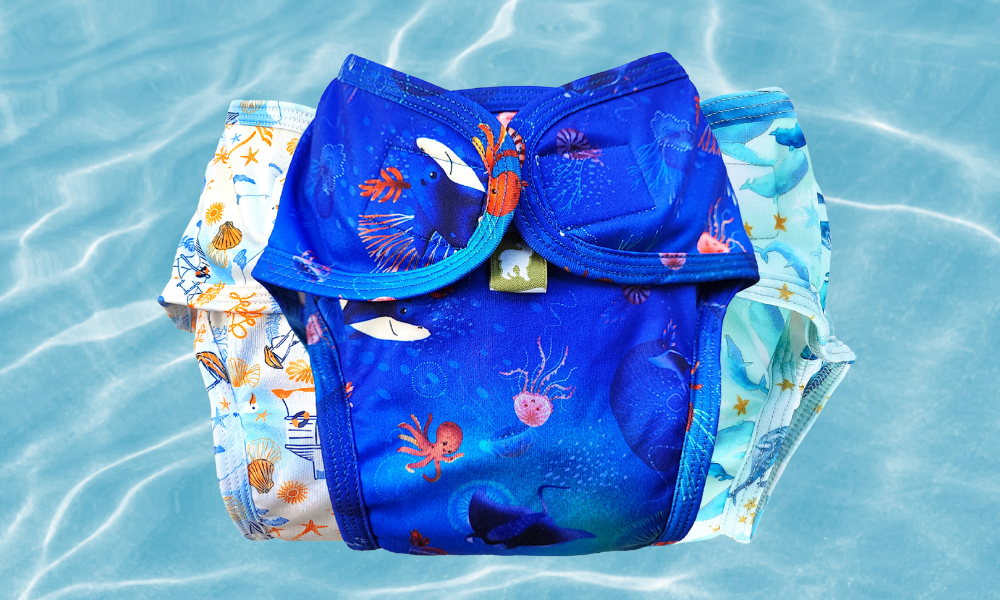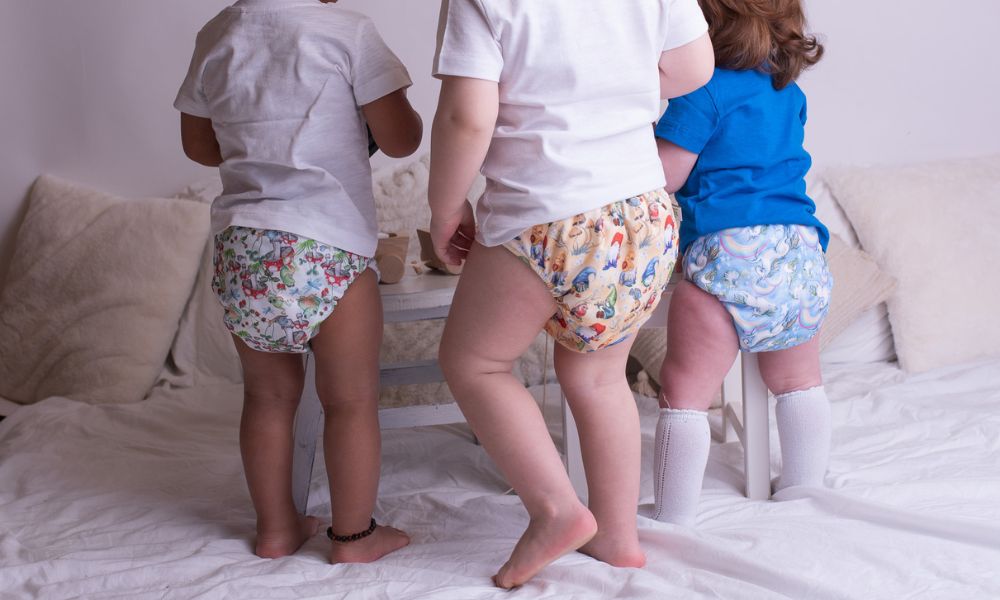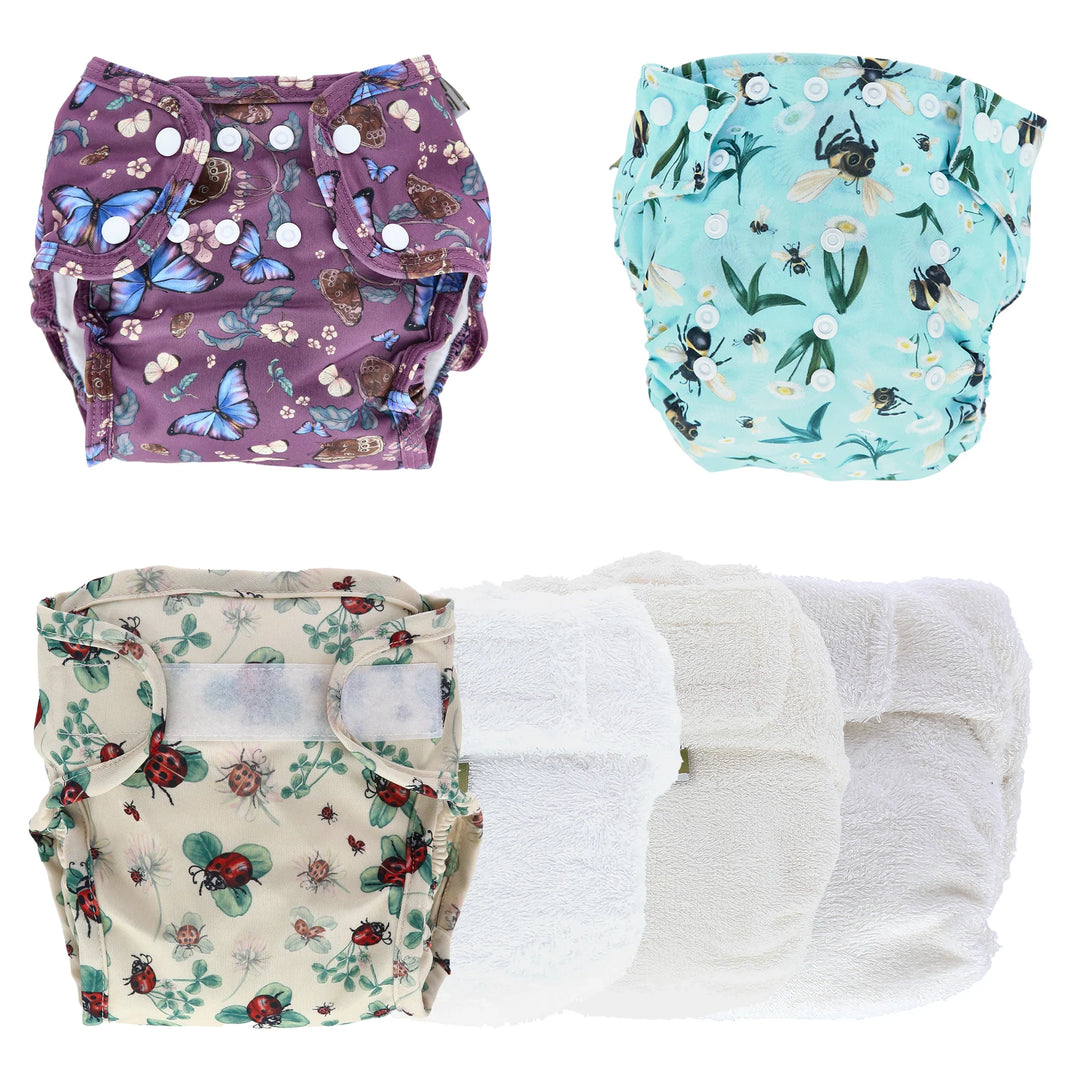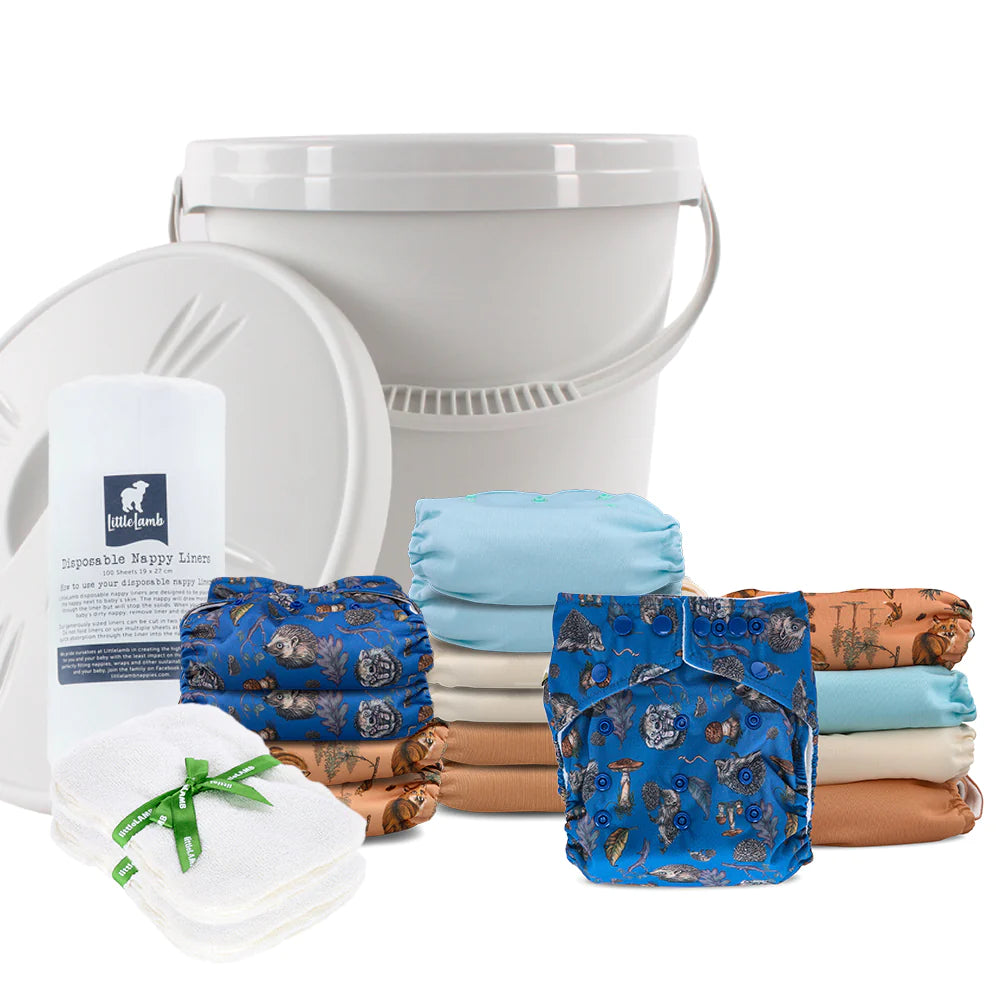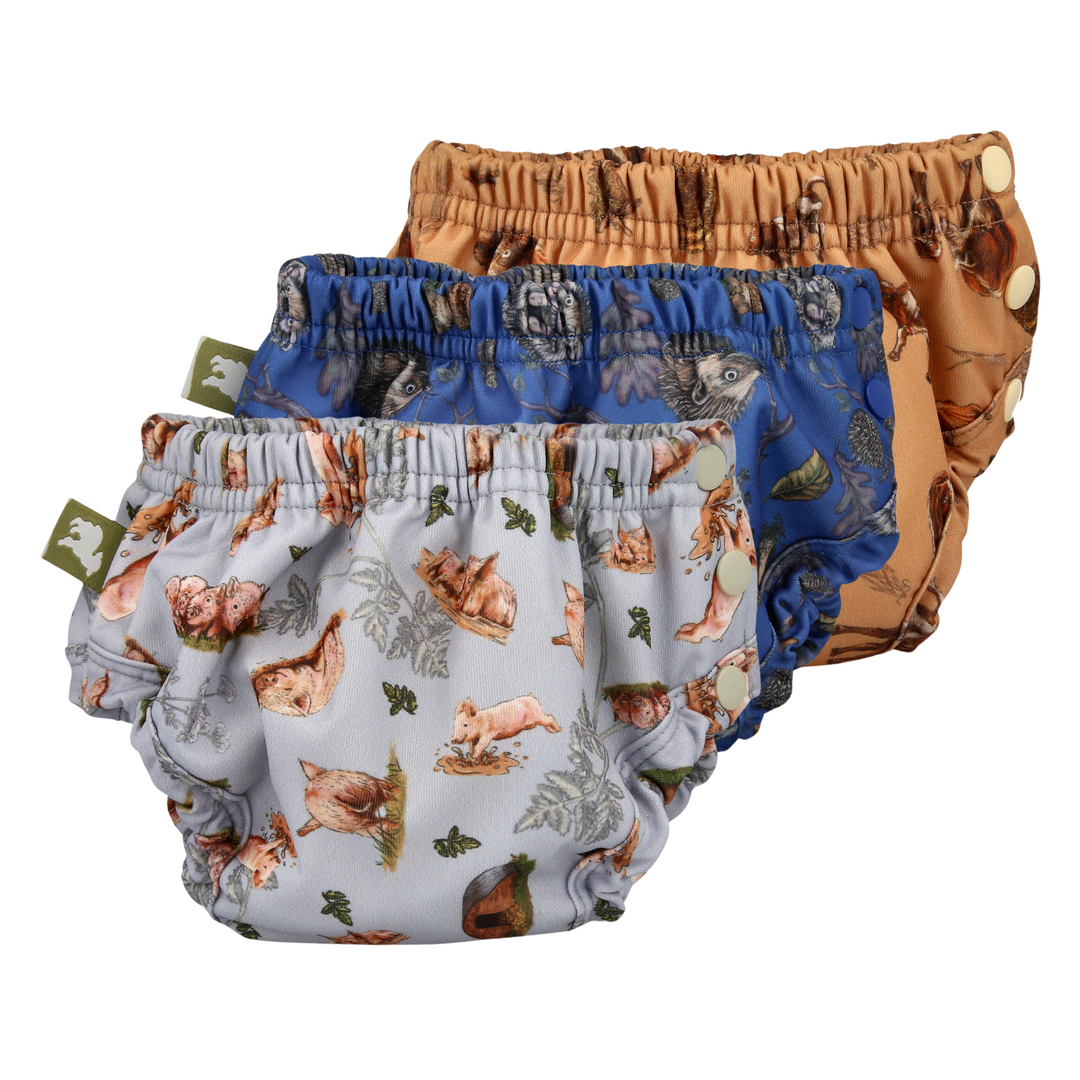
According to the latest research, the UK disposes of more than 2 billion disposable nappies each year. In total, this amounts to between 2-3% of all household waste. To put this in perspective, babies will typically use as many as 6,000 disposable nappies before they are potty trained.
This isn’t just a nightmare for parents, it’s a nightmare for the environment too. You can’t put disposable nappies in the recycling either as these products are not recyclable. This has caused workers to have to remove offending items from the recycled materials that end up on conveyor belts at recycling plants. Instead, disposable nappies fill up landfills because they are made up of composite materials that are incredibly difficult to break down. That’s why many families are now looking for green friendly alternatives to tackle this issue.
If you are looking for a greener option for your newborn or little one, you might be considering biodegradable nappies. Here’s everything you need to know about biodegradable nappies and whether or not they are the right solution to this problem.
What Are Biodegradable Nappies?
Biodegradable nappies may sound as though they are safe for the environment. Indeed, the terms “green-friendly” and “eco-friendly” have become marketing staples over the past few years. However, they tend to mean far less than most consumers are led to believe.
Biodegradable nappies are described as nappies that are made with natural, biodegradable materials that are also sustainable. As well as this, they will often contain far less chemicals compared to disposable nappies. As such, they are marketed as being better for the planet as well as the babies themselves. Claims suggest that biodegradable nappies can help reduce the chances of a baby developing an issue like nappy rash.
Are Biodegradable Nappies Biodegrable?
As mentioned, biodegradable is more of a marketing term than it is a scientific statement. Particularly when it’s used by companies that are selling biodegradable nappies. Currently, there’s no UK standard that nappy manufacturers must comply with to make the claim that their nappies are biodegradable.
2020 introduced a slight change by the British Standard Institute with a voluntary standard to verify claims about biodegradable plastic. However, this only applies to products that break down in open air rather than those left in a landfill.
As such a company could claim their nappies are biodegradable when in reality their products could only contain a few biodegradable materials. Experts warn that no nappy which is disposable will be made from products that are 100% biodegradable.
Certain parts of the nappy are always going to be non-biodegradable including the outer layer which likely contains polyethylene film and the sticky tabs. These tend to be made from polyurethane.
Will Biodegradable Nappies Break Down?

The main problem with disposable nappies is that they won’t break down. Producers of biodegradable nappies are presenting their products as a solution to this issue. However, this isn’t quite the case.
According to researchers, biodegradable materials will not degrade effectively when placed in landfill conditions. Oxygen and microbes are needed for the biodegredation process. So, for these materials to degrade, they would need to be composted.
Currently this option in the waste management industry is simply not supported. For biodegradable nappies to become a sustainable solution, there would need to be a significant shift in how these products are managed once they end up in the waste.
Can Parents Impact Whether Biodegrable Nappies Will Break Down?
Some producers of biodegradable nappies have suggested that consumers can help their products break down by disposing of them the right way. They suggest putting them in a biodegradable sack outside of the main bin liner to ensure that they get the right level of exposure to oxygen.
However, as mentioned, the outer layer of these products are typically made from plastic which is not biodegradable. As such, if they are wrapped up then the biodegradable components will remain protected and won’t break down. Expecting parents to leave dirty nappies unwrapped before they are put in the waste is simply not a viable solution.
Are Biodegrable Nappies Recyclable?
It’s common for parents to assume that biodegradable nappies can be put in the recycling because they are - as the name suggests - biodegradable. However, this is not the case and even nappies which meet the right biodegradable standards are not compostable. As such, they will still take years to break down. This means they can not be placed in the green recycling bin.
It’s also worth noting that human waste is not allowed in green recycling bins. The reason for this is that the waste from humans contains bacteria which can harm the environment as well as the people who live there.
Instead nappies end up in a landfill where even biodegradable nappies can remain in the same condition for decades and potentially even centuries.
What If These Nappies Do Degrade?

In some cases biodegradable nappies will break down and degrade in the right conditions. However, experts warn that this may not provide the positive impact that people are hoping for. If these products break down, then it’s possible that they could release harmful chemicals and toxins into the atmosphere and environment.
There’s not enough research to determine whether or not this could be a danger or assess the full impact that it might have on the surrounding environment. People assume that natural materials are not going to be toxic to the surrounding environment and this might not be the case. It depends on how the materials have been used, how they have been manufactured and how they break down.
Are Some Biodegradable Nappies Better Than Others?
Researching the market, you might find that some nappy producers have better biodegradable products compared to others. Some producers claim that their products are made from 70%, 90%, or even 100% natural materials. However, while some may provide more green friendly solutions than others they all have the same problem. To break down, they need to be managed correctly. The facilities for this type of waste management are not available yet in the UK and are unlikely to be implemented on the grand scale required.
To their credit, top sellers of biodegradable nappies are not directly hiding this issue. Many freely admit that their products will not degrade the way they intended in a landfill environment. However, this does nothing to fix the issue that they present. They are far from the right solution to the environmental problem which is caused by disposable nappies. Even products which are rightfully marketed as compostable will do nothing if they end up in the landfill. There could be other problems with biodegradable nappies as well.
Are Production Methods For Biodedgrable Nappies Sustainable?
There is evidence which suggests that production for disposable nappies will have a far greater environmental impact compared to their actual disposal. The reason for this is that the processes required to create these nappies are energy intensive. Particular if they are created using biopolymers. These may require more energy for production compared to the typical petroleum based polymers that are used in the production of nappies that are considered to be non-biodegradable.
Companies are also not always fully transparent when discussing their production methods. As such, it’s difficult to know how much energy is going to be required to produce the biodegradable nappies that are being sold on the market as green friendly alternatives.
Do Biodegradable Nappies Even Work?

As with anything, whether or not biodegradable nappies provide the right results, will depend on the brand. Some are significantly better than others. However it is possible to find biodegradable nappies that will provide the same level of asborbence as regular nappies. Even products that use mainly natural materials have received positive reviews from parents.
The problem is that they don’t provide any real additional green benefits compared to the typical single use disposable nappies that are currently filling up landfills across the country. Without a significant alteration to the way waste like this is managed, that isn’t going to change.
It’s clear then that while they may provide a similar level of absorpence, biodegradable nappies may not provide the right solution for parents searching for a green friendly solution. Parents who do want a greener option should consider using reusable nappies. Generally speaking, parents will need approximately a fraction of reusable nappies compared to if they purchased disposable products.
People often assume that they will need to use far more energy in terms of cleaning these nappies which reduces the environmental impact. However this is not the case and reusable nappies are designed to be easy to clean. So, even with the increased washing requirements, they are still far more green friendly compared to the disposable and biogradrable nappies that are currently available. Even the top biodegradable brands fall short of the right green standards and will do little to reduce the typical carbon footprint of a household with a new baby.





